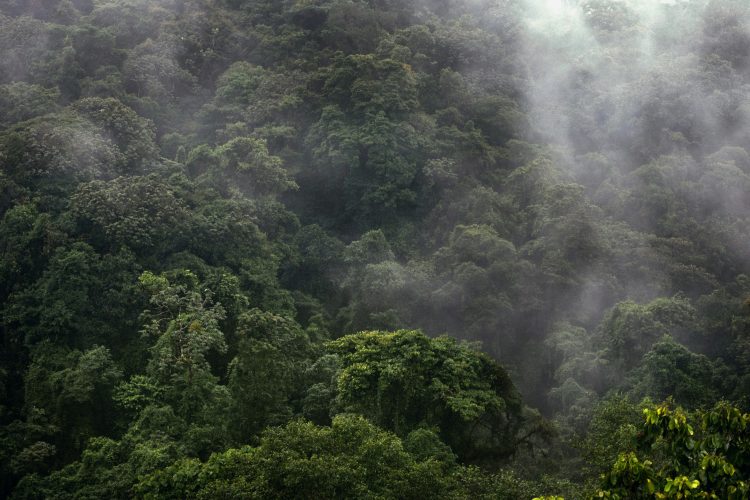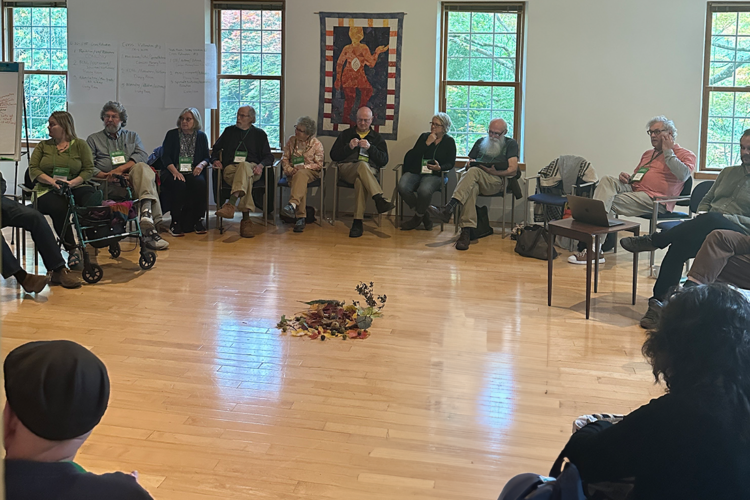
The bottom line for the indigenous peoples of the world is their sovereignty and the recognition of that sovereignty. Despite, as one man put it, “choosing or being forced to live” within the borders of nation-states, and in many cases holding citizenship there, indigenous peoples hold dear their languages, traditions, ways of living on the Earth and identity as peoples. They have in common the fact that their lands were invaded and claimed as territories by conquerors, mostly European, who considered themselves superior. The arguments behind these actions were justified by what is now referred to as the Doctrine of Discovery. (For more information on the Doctrine of Discovery see http://www.nyym.org/?q=doc_of_disc_factsheet.)
By means of many kinds of force the indigenous peoples of the world have been reduced in numbers, lost land that had sustained them for centuries, and endured denigration and poverty. The policies behind these forces have manifested in an ethnocide that involves general shame and despair.
In recent decades, because of increased possibilities of communication and the assistance of the United Nations, indigenous peoples (IPs) have found each other and formed sometimes difficult but quite strong alliances. When I began attending meetings at the UN in 2000, IPs had achieved recognition as one of nine Major Groups identified at Rio in 1992 as components of civil society. A year later I witnessed the excitement in the halls when the UN General Assembly (UNGA) announced its decision to host and support a Permanent Forum on Indigenous Issues (PFII) to begin the following year. The PFII has allowed IPs from all over to meet face to face for two weeks every year, articulate common ground, strengthen connections and consider strategies. Together they are engaged in an uphill climb against years of history.
UNDRIP
The most important global event in the Indigenous world was passage in 2007 of the UN Declaration on the Rights of Indigenous Peoples (UNDRIP). (For text of UNDRIP go to http://www.un.org/esa/socdev/unpfii/documents/DRIPS_en.pdf.) UNDRIP is an “aspirational document.” Like other UN Declarations on Rights it has no force of law but it can be referred to as a standard and be cited in judicial decisions. The Declaration is being translated into all indigenous languages, and widely disseminated and taught.
UNDRIP calls for the “free, prior and informed consent” of IPs before any action is taken that will affect them. In spite of this, land dispossession and rights violations are happening on all inhabited continents, as corporations try to implement extractive industries, bio-fuel plantations, large hydroelectric facilities, and even playgrounds for the rich.
A PFII study on how well UNDRIP is being implemented has shown discouraging results. Non-indigenous persons whose work impacts indigenous people and programs often don’t know about UNDRIP and how it applies to their work. Many indigenous people don’t yet know that UNDRIP exists, that it articulates their rights, and can potentially be of help. Education about UNDRIP is needed everywhere, among UN agencies and departments, governments, police forces, soldiers, and citizens in general.
It is crucially important to get laws on the books that incorporate basic rights and that clarify title to land. Written title was not an issue before colonialism came along with its rules about ownership. However, as one speaker asserted, “There is direct continuity with colonialism. The master/slave relationship is still there. The constitutions and laws may be in place but there is no way to have them enforced.”
CURRENT WORK
In 2010 the UNGA determined to hold a World Conference on Indigenous Peoples at its September 2014 meeting. This will be the first time the governments of the world will focus on how nations-states should implement UNDRIP. The IPs have been preparing. In addition to seven regional meetings, in June of 2013 600 indigenous representatives gathered in Alta, Norway for a Global Indigenous Preparatory Conference for the World Conference on Indigenous Peoples. (To locate Alta see: http://www.visitnorway.com/us/where-to-go-us/northern-norway/alta/.) This meeting produced the Alta Outcome Document, intended as the foundational basis for the World Conference. The Alta Outcome document identifies four themes of paramount importance:
- indigenous peoples’ lands, territories, resources, oceans and waters;
- implementation of the rights of indigenous peoples and UN action to support it;
- indigenous peoples’ priorities for development with free, prior and informed consent;
- relationship between governments, indigenous peoples and extractive industries regarding participation, access to decision-making and distribution of income.
In September of 2013, the Alta Outcome Document was submitted as an attachment to a letter to the Secretary-General requesting that the document be circulated as an official document of the General Assembly. The letter was signed by the Permanent Representatives to the UN of nine nation-states. To read the letter and the very informative 8-page Alta Outcome Document, go to http://daccess-ods.un.org/TMP/6661056.28013611.html.
In spite of this, UNGA’s plans for the Conference were proceeding without the involvement of IPs. A major North American indigenous group has withdrawn from participation and asked that the Conference be cancelled. Those remaining involved are demanding “full, equal and effective participation,” and a compromise is being worked out.
The President of UNGA is working on the Outcome Document for the World Conference now. (When you hang around the UN for any period of time, you discover that the Outcome Documents, which often take months of preparation, are actually negotiated in advance and only tweaked at the big meetings.) He has appointed two indigenous representatives and two representatives from nation-states to assist in creating a draft. Three open, interactive hearings are scheduled, along with additional informal meetings for easier dialogue. I just attended the first of these meetings.
IPs are united in stating that the Alta Outcome Document, which truly represents the heart of their concerns, should be the basis of the September meeting, and should be appended to whatever eventually gets approved at the World Conference.
OUR ROLE
As non-indigenous supporters of IPs we have a responsibility to become informed ourselves and to educate others, and then to act responsibly as we are able. I identify four areas to study:
- The Doctrine of Discovery –The Global Indigenous Women’s Caucus strongly urges that we teach all people the history of the Doctrine of Discovery, how the taking of land and genocidal practices against IPs were justified and now in many places underlie aspects of “the Law of the Land.” We can work with any appropriate groups we belong to, encouraging joining with many other groups in public repudiation of the Doctrine.
- UNDRIP – This Declaration is both aspirational and inspirational. It is the result of over 20 years of hard work and should be the ethical basis for human interaction in general.
- The Alta Outcome Document – Here is the agreed prioritization of global indigenous concerns at present.
- Sumac Kawsay / Vivir bien – Sumak kawsay, translated into Spanish as Vivir Bien, is an ancient Quechua phrase meaning “good living” or the “good life.” It is a way of living in harmony within communities, ourselves, and most importantly, our living, breathing environment. Sumak kawsay promotes regeneration and regrowth. It embodies community and well-being, and a co-existence with nature. Sumak kawsay is embedded in the ethical values of indigenous cultures. I have found a form of this concept present in every indigenous culture about which I’ve learned.
I would like to end this essay with a quote from Mario Areda, representative for three Indigenous Peoples in South America, who spoke of “… our own god, which is in all things and all places, in the four directions, the plants, the animals, in the air, the sun, the moon, in each grain of corn. Everything, absolutely everything is part of our god….” Areda doesn’t limit the realm of his god to living species; he sees that the distinction between living and non-living forms is blurry and unreal, and that the divine is inherent in all Creation. If our societies can learn this in time, we may survive.

